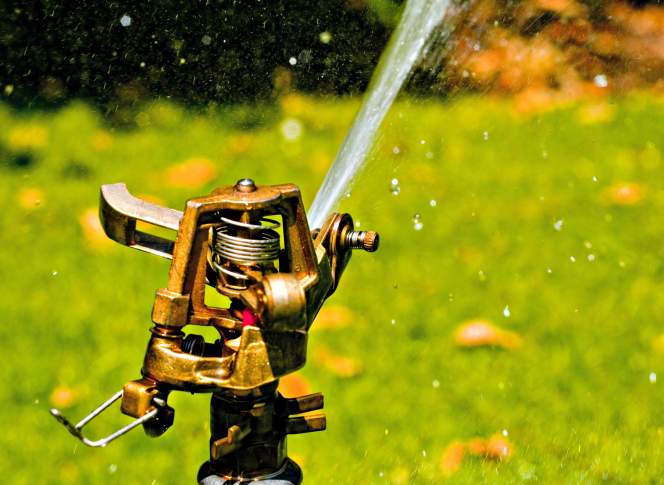Ways To Make A Yard Less Thirsty
Summer in Wisconsin can often be quite hot and dry, interrupted only by intermittent rains. Drier weather conditions means homeowners feel they need to water the plants in their yards.
August 30, 2016

Yard sprinkler watering

Summer in Wisconsin can often be quite hot and dry, interrupted only by intermittent rains. Drier weather conditions means homeowners feel they need to water the plants in their yards. Since maintaining lawns, flowers and vegetable gardens can constitute 30 percent of the water homes consume each year, homeowners may want to take measures to reduce the volume they use to sustain these plants. And as fall arrives, they may want to think about landscaping changes as they prepare for winter.
A good plan that takes into account the water needs of a landscape design is a good place to start. This plan will select for perennial native plants with deeper root systems rather than perennials or annuals that may have smaller root systems. Deeper-reaching roots allow plants to access more moisture further from the soil. Grouping plants with similar water needs together and replacing turf grass or lawn areas with plants that need less watering are two more ways to conserve.
A landscaping plan should incorporate mulching to cover bare soil. Mulch is available in many forms, but organic types composed wood chips or compost can help retain soil moisture, regulate soil temperature and control weeds. Each of these factors leads to more water being available for the plants growing in a mulched planting bed. Perennials in Wisconsin should be mulched in the fall, usually around Thanksgiving, after a few freezes.
The addition of compost to a landscape will improve the soil’s ability to infiltrate water. Compost can be added by mixing it into the soil at the time of planting or used as a mulch up to 3 inches deep in established planting beds. In spring and fall, it can also be added as a top-dress for lawns to improve quality of the soil over the long term. Compost must be shoveled on to the lawn and spread to a depth of about one-half inch with a leaf rake.
How a lawn is managed can reduce the volume of water it needs. Compared to cutting grass as short as possible, keeping it 3 to 4 inches tall supports a deeper root system that extends further into the soil to reach more moisture. These slightly taller plants also provide additional shading to soil, keeping its temperature lower and reducing evaporation from its surface.
When it comes to watering lawns, most plants need about one inch of rain per week. Using a rain gauge to monitor how much rain is falling on a lawn is useful, especially for yards with automated sprinklers on a timer. Sprinklers should not be run following an overnight rainstorm.
Additionally, homeowners who use automated sprinklers should ensure this water lands on plants and not on impervious surfaces such as driveways and sidewalks. A thorough watering once or twice a week is better than a daily light watering to ensure sufficient penetration of the water into the soil to encourage deeper root growth.
Fall can be a good time for gardeners to think about redesigning their yards and flower beds. Making those changes can easily include methods for reducing water use. By selecting plants with larger root systems and adjusting a lawnmower’s cutting height, homeowners can ensure their plants will be able to access more moisture deeper in the soil. Gardeners may also want to consider adding rain barrels or establishing rain gardens to expand efforts to sustain a water-smart back yard.
Joseph Van Rossum is a natural resources educator with University of Wisconsin-Extension.
 Passport
Passport
















Follow Us